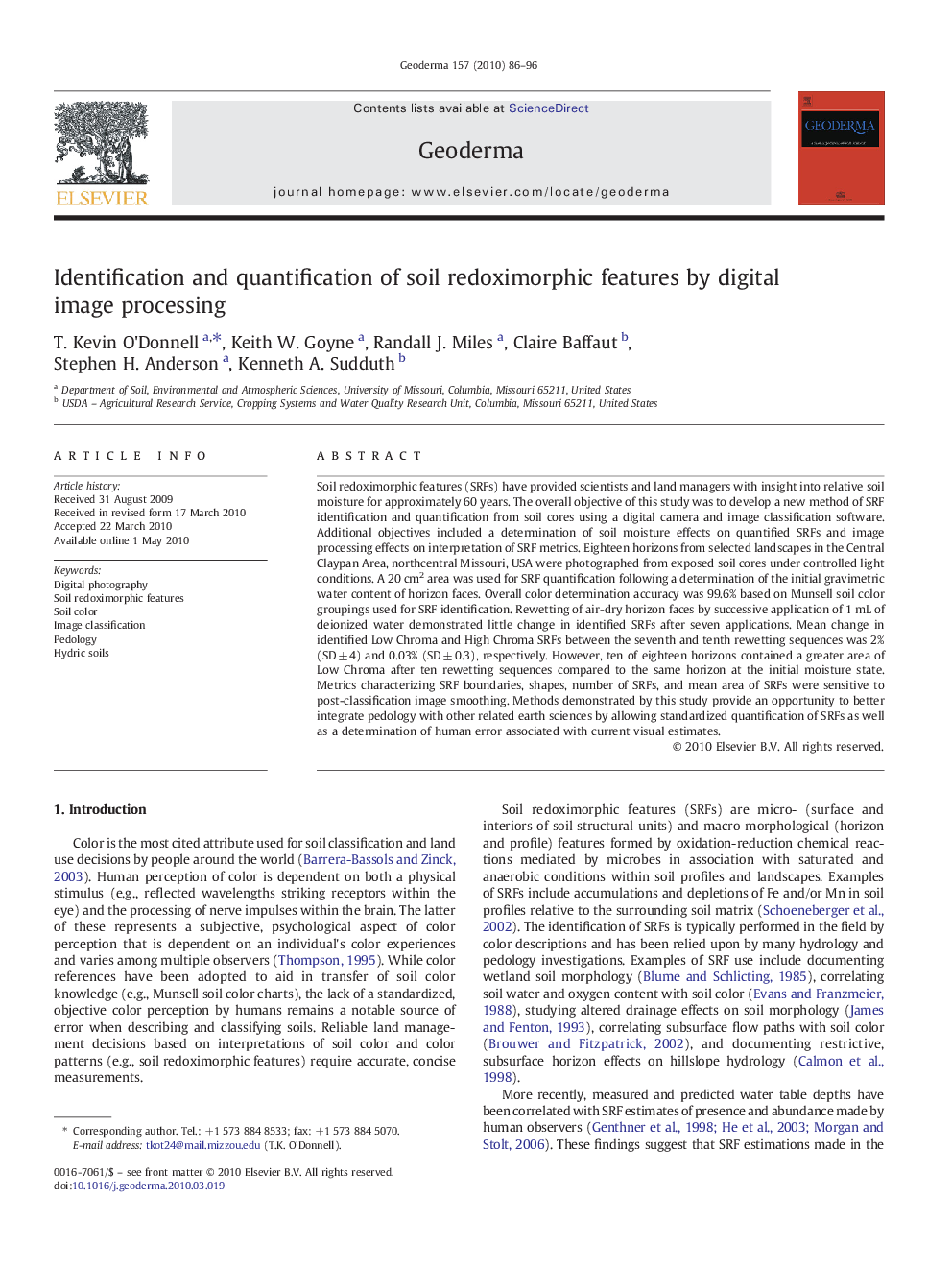| Article ID | Journal | Published Year | Pages | File Type |
|---|---|---|---|---|
| 4574395 | Geoderma | 2010 | 11 Pages |
Soil redoximorphic features (SRFs) have provided scientists and land managers with insight into relative soil moisture for approximately 60 years. The overall objective of this study was to develop a new method of SRF identification and quantification from soil cores using a digital camera and image classification software. Additional objectives included a determination of soil moisture effects on quantified SRFs and image processing effects on interpretation of SRF metrics. Eighteen horizons from selected landscapes in the Central Claypan Area, northcentral Missouri, USA were photographed from exposed soil cores under controlled light conditions. A 20 cm2 area was used for SRF quantification following a determination of the initial gravimetric water content of horizon faces. Overall color determination accuracy was 99.6% based on Munsell soil color groupings used for SRF identification. Rewetting of air-dry horizon faces by successive application of 1 mL of deionized water demonstrated little change in identified SRFs after seven applications. Mean change in identified Low Chroma and High Chroma SRFs between the seventh and tenth rewetting sequences was 2% (SD ± 4) and 0.03% (SD ± 0.3), respectively. However, ten of eighteen horizons contained a greater area of Low Chroma after ten rewetting sequences compared to the same horizon at the initial moisture state. Metrics characterizing SRF boundaries, shapes, number of SRFs, and mean area of SRFs were sensitive to post-classification image smoothing. Methods demonstrated by this study provide an opportunity to better integrate pedology with other related earth sciences by allowing standardized quantification of SRFs as well as a determination of human error associated with current visual estimates.
